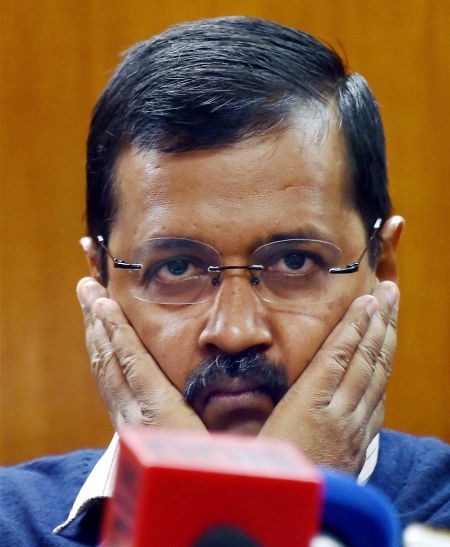With many exemptions and caveats, the road-rationing system may be another disappointment in reducing Delhi’s pollution woes, observes A K Bhattacharya
 The Delhi government’s decision to allow private cars with odd and even numbers on their registration plates to operate only on alternate days of the week has caused a great deal of consternation among residents of the National Capital Region. There is also an animated national debate on the effectiveness of what would be the country’s first road-rationing system to check rising pollution levels in Delhi.
The Delhi government’s decision to allow private cars with odd and even numbers on their registration plates to operate only on alternate days of the week has caused a great deal of consternation among residents of the National Capital Region. There is also an animated national debate on the effectiveness of what would be the country’s first road-rationing system to check rising pollution levels in Delhi.
The scheme will operate for a fortnight from January 1 and there are quite a few exempted categories. It is thus not yet clear as to what extent the new scheme will be able to reduce environmental pollution in Delhi and whether it would result in chaos or it would be yet another occasion for Delhi Chief Minister Arvind Kejriwal to claim how the police that remains under the Union government’s control has once again thwarted his grand plans for the state.
Two-wheelers, which contribute about a third of Delhi’s pollution, have been exempted from the road-rationing system. There is thus a strong possibility that the number of two-wheelers on Delhi’s roads (at present about 5.7 million two-wheelers are registered in the city) would go up significantly, thereby raising its share in the state’s pollution. Several users of cars might switch over to two-wheelers, if they have one, on days they find that taking out their cars would not be possible because of the new scheme.
This may relieve the pressure on the public transport system, but pollution levels from private transportation vehicles may not really go down. At 2.6 million cars registered in Delhi, they account for only 10 per cent of Delhi’s pollution level. The saving grace, however, would come from trucks, which contribute about 46 per cent to Delhi’s pollution and would be subjected to the road-rationing system.
There is little doubt that the idea of road rationing works if enforced for short durations. A fortnight-long experimentation of the system, therefore, is a good move. But there was no need for Kejriwal to say upfront that if people violated the system in large numbers, the scheme would be discontinued. This would only encourage more pressure to build on the government to give up the idea. A new system would be tried with half-hearted measures and discontinued for the wrong reasons. It would also give the government an escape route from its responsibility of reducing Delhi’s pollution.
For instance, little thought has been applied to the well-established fact that a road-rationing system also forces more owners of private vehicles to go in for pooling of cars. But the Delhi government has no plan to use the new system to encourage increased carpooling.
The average occupancy of a car in Delhi is 1.15 persons. If two-wheelers, women car drivers, ambulances and other emergency vehicles could be exempted, surely the government could have also exempted all those cars which carry at least four persons (including the driver) on at least the main roads of the city?
Delhi’s environment pollution is a problem that needs to be solved through a set of measures that should include ensuring better public transportation facilities and improved usage of road space. The share of roads in Delhi’s total area is one of the highest among all metropolitan cities in India. Yet, the rapid pace at which the vehicular population in Delhi has been growing has caused problems for the city’s environment and traffic management. A road-rationing system to encourage carpooling would have been an integral part of the Delhi government’s programme.
It is a pity that the absence of a comprehensive plan to check Delhi’s vehicular pollution levels is an old problem. In 2000 or so, there was some action by the Delhi government, but not because it chose to respond to the challenges, but because the Supreme Court, hearing a public interest litigation, ordered the use of compressed natural gas or CNG in all public transport vehicles operating in Delhi. The compulsory use of CNG, a green fuel, led to a steady fall in the pollution levels in the entire state. But there were no steps forthcoming from the Delhi state government that would have furthered the movement against curbing an unhealthy rise in vehicular pollution.
A few years ago, the Delhi government under its then Chief Minister Shiela Dikshit had launched a bus rapid transit system on an experimental basis on a busy stretch of New Delhi. But that too was given up for a variety of reasons including the flawed manner in which it was executed. And now we have the road rationing system. But the manner in which it is being implemented, it seems it would meet the same fate as many of the past schemes.











 © 2025
© 2025